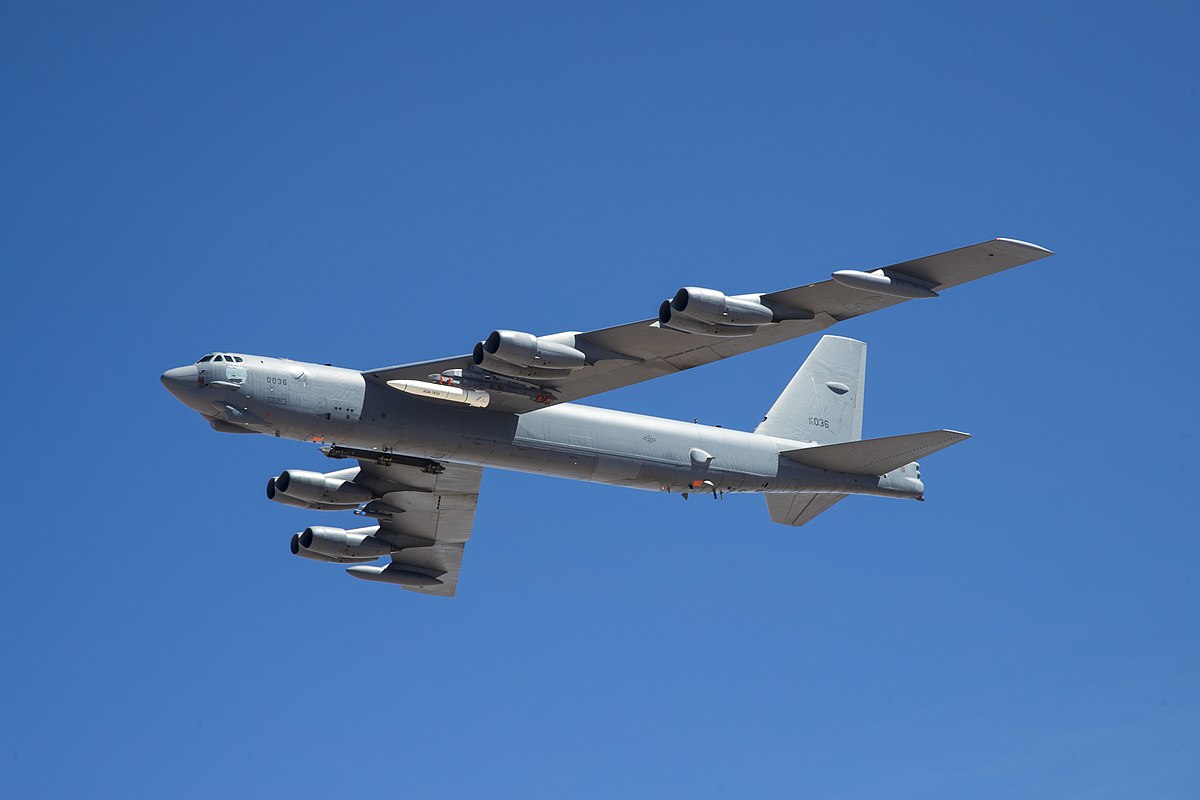 AGM-183A ARRW on a U.S. Air Force B-52. Credit: U.S. Air Force
AGM-183A ARRW on a U.S. Air Force B-52. Credit: U.S. Air Force
Managing the Unintended Consequences of Hypersonic Weapons Development
Media reports of hypersonic weapons developments have been increasing. Currently, the U.S., Russia, and China are the leading countries developing these weapons. Hypersonic weapons combine the speed of ballistic missiles with the maneuverability of cruise missiles. This makes them useful as both offensive and defensive weapons. They are seen as “unstoppable” and as a “game changer.” At the moment, there is no existing technology and no operational defense system against them, which is why they have become desirable for a number of countries.
Hypersonic weapons can travel faster than five times the speed of sound (Mach 5). They can reach high-priority targets from a great distance extremely quick and are difficult to intercept. There are two main categories, hypersonic glide vehicles (HGVs), which are typically launched by ballistic “booster” missiles and glide through the air toward targets, and hypersonic cruise missiles (HCMs), which are powered by scramjets—high-speed air-breathing engines—and can readily maneuver to avoid being shot down on their way to their targets. Both Russia and China are continuing to develop their arsenals. For example:
- Avangard – This Russian HGV can carry both a nuclear and conventional payload, it has a range of over 6,000 km with a speed of Mach 20.
- Zircon – This Russian HGV with a range of 1,000 kilometers and maximum velocity of nine times the speed of sound has been successfully test-fired from a nuclear submarine.
- DF-17 – This Chinese medium-range ballistic missile equipped with an HGV has been repeatedly tested and reaches speeds of Mach 5-10 with a range between 1,800-2,500 km. Its accompanying HGV, the DF-ZF (formerly WU-14), has a range of 1,600-2,400 kilometers, and a speed of 5-10 Mach, with high maneuverability and accuracy.
- Reportedly, an unnamed Chinese nuclear-capable HGV has been tested that circled the globe and “flew through low-orbit space before cruising down towards its target.”
Since the early 2000s, the U.S. has carried out the development of hypersonic weapons as part of its conventional prompt global strike program and is currently improving its hypersonic technology programs and its offensive hypersonic weapons. For example:
- AGM-183A Air-Launched Rapid Response Weapon (ARRW) – This U.S. Air Force long-range hypersonic missile, with a speed of Mach 20 and a range of 925km, will be wing-mounted on the B-52H bomber.
- Hypersonic Attack Cruise Missile (HACM) – While smaller and transported on fighter-sized aircraft, this U.S. Air Force air-breathing system might have a greater range than the ARRW but flies lower and shorter distances as it requires air for propulsion.
- Long-Range Hypersonic Weapon (LRHW) – This US Army’s long-range ground-based hypersonic weapon with a speed of more than Mach 5 and a range of 2,775 will use a common hypersonic glide body in combination with the Navy’s booster system, which can be launched from mobile ground platforms.
- Tactical Boost Glide (TBG) – This joint program of DARPA and U.S. Air Force aims to develop technologies for future air-launched, tactical-range hypersonic boost glide systems with three main goals: vehicle feasibility, effectiveness, and affordability.
- Operational Fires (OpFires) – This program is aimed at developing a type of ground-launched system with which hypersonic boost glide weapons can penetrate modern enemy air defenses and combat time-critical targets quickly and precisely.
- Hypersonic Air-breathing Weapon Concept (HAWC) – This long-range missile is a futuristic air-to-air combat missile concept, that can reach speeds above Mach 5 to improve precision and reduce response time and has been successfully tested.
Concern about Chinese and Russian advancements has raised hypersonic development to become one of the “highest priority” modernization areas for the U.S. Yet, unlike China and Russia, the U.S.’ hypersonic weapons are to be solely “conventionally armed.” Nevertheless, with the three leading countries developing these weapons a new arms race has begun. The rapid development of hypersonic weapons presents the following problems:
- They are able to overcome modern advanced air defense systems, rendering U.S. assets extremely vulnerable to attack.
- They decrease the reaction time to an attack, thereby increasing the risk of mistakes being made in response.
- They create more vulnerabilities to a nuclear second-strike capability.
- In particular, boost glide vehicles can be confused with nuclear-armed ballistic missiles; raising the possibility that an adversary may mistakenly respond to a conventional hypersonic attack by using nuclear weapons.
Adding to these problems, the possible proliferation of the technology to other powers poses a challenge. As a result, the U.S. will need to continue to advance its research in countermeasures against these weapons, such as the field of artificial intelligence.
As Russia and China continue to develop and test these weapons and neither party is likely to accept a total ban or a limit, the U.S. must maintain its technological lead to ensure military effectiveness and deterrence and to protect its national interests. But to decrease the chances of miscalculations as hypersonic weapons come online, the U.S. should hold talks with Russia and China about the potential destabilizing aspects of these weapons, and ways to make sure that the shorter reaction time is less likely to result in a mistaken nuclear response.





